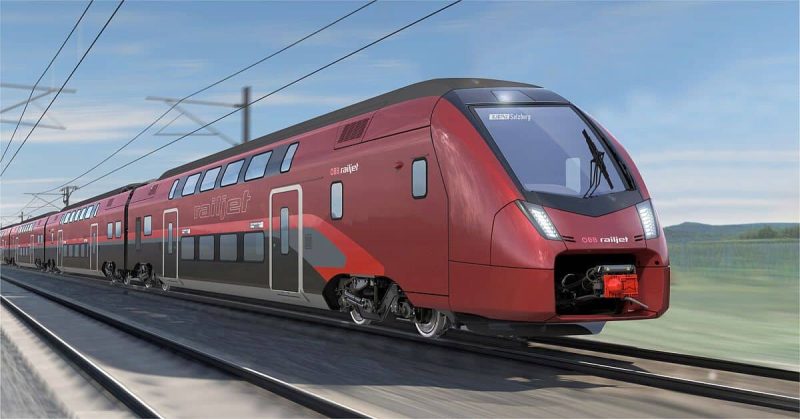A few years ago, the Westbahn was smiled at because of the fact that Stadler Kiss multiple units were used in long-distance traffic. The reason: This model is based on local trains that are used as S-Bahn trains in Zurich, for example. The ÖBB has now also ordered 14 sets, which are to be placed in direct competition with the private operator.
For many years, the Austrian Federal Railways were not exactly in favor of electric multiple units in long-distance traffic. It is therefore not surprising that the Railjets used to date are locomotive-hauled push-pull trains. Only the 4010/4130 series were used in this traffic segment over a longer period of time. 4011 was also in operation for a short time, but these were returned to Deutsche Bahn AG. The 4010, which was very popular with passengers, was even called "electric locomotive with passenger transport" in internal manuals at the time.
The strong focus on locomotive-hauled long-distance trains also has its downside, because apart from the Railjet sets, there is not a single control car. This is why Intercity and Eurocity occasionally use local transport, mostly in city shuttle livery. Of course, these do not offer the comfort that is usual in long-distance transport.

ÖBB order is confirmation of the former Westbahn decision
Since the start of operations, the private Westbahn has relied on double-decker electric multiple units from the Swiss manufacturer Stadler. These were originally developed for the Zurich S-Bahn, but further developments designed for long-distance traffic are used on the Westbahn. Die-hard ÖBBlers slandered the Kiss railcars at first, but now everything is different, because the Austrian Federal Railways will also be using Stadler-Kiss-3 in the future, and of all things on the western route.
As a result, both the ÖBB and the private Westbahn use the same rolling stock on the heavily frequented route. This is definitely a confirmation of the private challenger's decision at the time, because the Stadler multiple units offer significant economic advantages over the Railjet reversible sets. For example, the capacity per wagon is larger and they are also much lighter in direct comparison with the Railjet material. As a result, the energy consumption is lower. This is a significant advantage given the continued high electricity costs.

Westbahn as a "Showcase" also for Chinese manufacturer CRRC
For Stadler, the Westbahn was a veritable showcase for the long-distance model of the Kiss double-deck railcars. The model has simply proven itself and other railway operators are now using it. Ironically, the Intercity IIs, which are now very popular in Germany, were formerly used by the Westbahn, because the DB bought this "second hand" from the Austrians. The ÖBB, on the other hand, will obtain their future Kiss Raijets from the Altenrhein plant.
Incidentally, the Chinese manufacturer CRRC is also hoping for a similar "showcase effect", because Westbahn is the European launch customer of the Demu 2 double-decker model. In contrast to the Stadler-Kiss-III, these are not bought, but rented from a leasing company. In China, there are high hopes that the model will not only prove itself, but that larger orders from European railway companies can be landed thanks to the "Showcase". This would then help the Chinese to break through in Europe.








 trail (for them it's free to use)
trail (for them it's free to use)
Comment